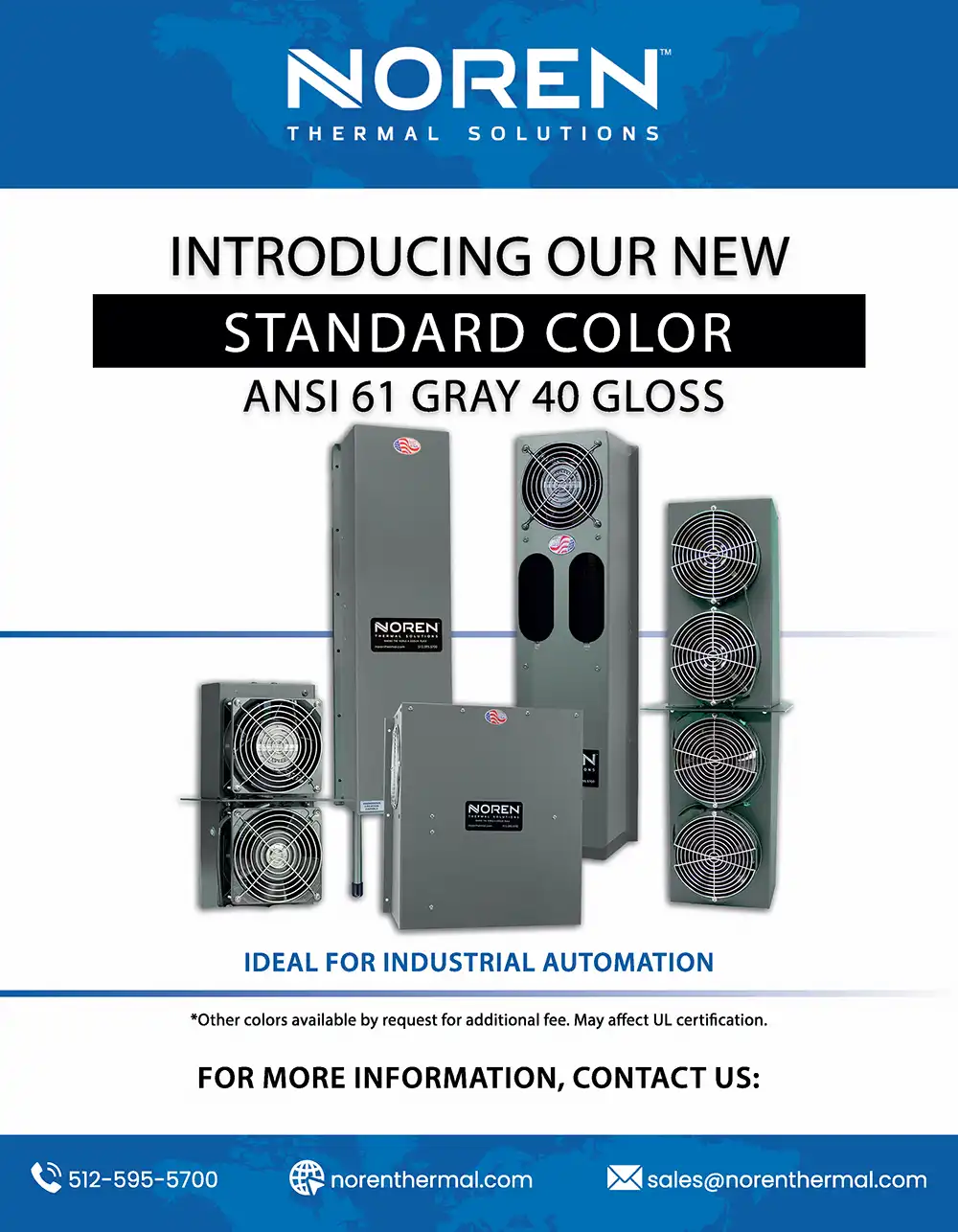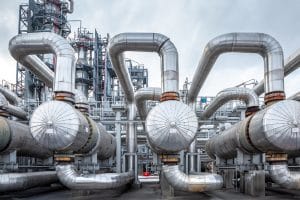 As technology has advanced over the decades, most systems have become more efficient and powerful by becoming more complex. However, in many instances, thermal management systems have advanced by utilizing simpler and more natural heat transfer processes. For example, instead of using complicated equipment to create chilled air and combat electrical waste heat, more modern thermal management systems rely on their abilities to rapidly absorb and transfer waste heat. With an eco-friendly cooling fluid and a heat exchanger designed to facilitate its flow, transferring heat can achieve high-performance thermal management with much greater efficiency than older electrical cooling solutions. (more…)
As technology has advanced over the decades, most systems have become more efficient and powerful by becoming more complex. However, in many instances, thermal management systems have advanced by utilizing simpler and more natural heat transfer processes. For example, instead of using complicated equipment to create chilled air and combat electrical waste heat, more modern thermal management systems rely on their abilities to rapidly absorb and transfer waste heat. With an eco-friendly cooling fluid and a heat exchanger designed to facilitate its flow, transferring heat can achieve high-performance thermal management with much greater efficiency than older electrical cooling solutions. (more…)
Streamlined Cooling in the Food & Beverage Industry
 As heat exchangers have helped significantly streamline electrical and other thermal management processes over the decades, the effects have impacted every industry to some degree. Those impacts may differ for various industries. Those that rely most heavily on thermal management processes have often benefited the most from streamlining those processes. For example, in food & beverage manufacturing, thermal management is more than just a solution for preventing electrical overheating. It’s also vital to many of their key processes, and with the help of modern heat exchangers, companies have been able to significantly streamline those processes, as well. (more…)
As heat exchangers have helped significantly streamline electrical and other thermal management processes over the decades, the effects have impacted every industry to some degree. Those impacts may differ for various industries. Those that rely most heavily on thermal management processes have often benefited the most from streamlining those processes. For example, in food & beverage manufacturing, thermal management is more than just a solution for preventing electrical overheating. It’s also vital to many of their key processes, and with the help of modern heat exchangers, companies have been able to significantly streamline those processes, as well. (more…)
Can Below-Ambient Cooling Be More Eco-Friendly?
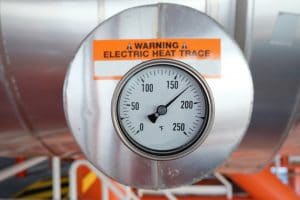 Over the decades that heat exchangers have helped transformed industrial thermal management, companies in nearly every industry have begun to rethink their approaches to electrical cooling. For most modern applications, the chilled air that more traditional solutions utilized is no longer necessary. The more innovative methods of transferring heat that heat exchangers utilize, and the ambient cooling that results from it, have proven more than sufficient. However, in some applications, efficient thermal management can still require below-ambient cooling, though fortunately, companies don’t have to rely on older, more cumbersome cooling methods to achieve it. (more…)
Over the decades that heat exchangers have helped transformed industrial thermal management, companies in nearly every industry have begun to rethink their approaches to electrical cooling. For most modern applications, the chilled air that more traditional solutions utilized is no longer necessary. The more innovative methods of transferring heat that heat exchangers utilize, and the ambient cooling that results from it, have proven more than sufficient. However, in some applications, efficient thermal management can still require below-ambient cooling, though fortunately, companies don’t have to rely on older, more cumbersome cooling methods to achieve it. (more…)
When Eco-Friendly Cooling Is the Norm
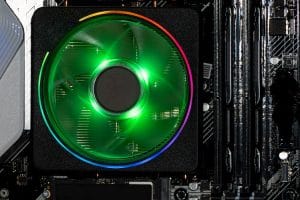 Technology has driven operations in most industries for so long that it can be difficult to remember a time when it hasn’t. It’s the norm for most industries, and for companies to remain competitive, much of their investment and advancement has to focus on making their technology solutions more powerful and efficient. That often means more than just implementing the most advanced technologies; it also means implementing the most efficient and effective periphery systems, such as those responsible for an application’s electrical thermal management. With modern heat exchangers and custom thermal solutions, more efficient and eco-friendly cooling has become the norm for companies in a variety of different fields. (more…)
Technology has driven operations in most industries for so long that it can be difficult to remember a time when it hasn’t. It’s the norm for most industries, and for companies to remain competitive, much of their investment and advancement has to focus on making their technology solutions more powerful and efficient. That often means more than just implementing the most advanced technologies; it also means implementing the most efficient and effective periphery systems, such as those responsible for an application’s electrical thermal management. With modern heat exchangers and custom thermal solutions, more efficient and eco-friendly cooling has become the norm for companies in a variety of different fields. (more…)
How Heat Exchangers Make Wastewater Treatment Viable
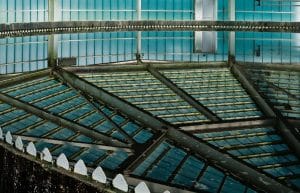 The many different ways in which heat exchangers have modernized electrical cooling processes have also helped kicked off several other technological advances in many different industries. With the ability to handle some of the most demanding electrical cooling applications, while still minimizing energy usage and optimizing results, companies have been able to take advantage of increasingly more advanced technologies. Maintaining those technologies with proper cooling systems is no longer such a challenge thanks to heat exchangers and other custom thermal solutions. This includes the technology required to institute industrial wastewater treatment processes, which have become essential for modern companies seeking to create more eco-friendly business practices. (more…)
The many different ways in which heat exchangers have modernized electrical cooling processes have also helped kicked off several other technological advances in many different industries. With the ability to handle some of the most demanding electrical cooling applications, while still minimizing energy usage and optimizing results, companies have been able to take advantage of increasingly more advanced technologies. Maintaining those technologies with proper cooling systems is no longer such a challenge thanks to heat exchangers and other custom thermal solutions. This includes the technology required to institute industrial wastewater treatment processes, which have become essential for modern companies seeking to create more eco-friendly business practices. (more…)
How Heat Exchangers Make for More Eco-Friendly Cooling
 As companies have evolved over the years, their specific goals for growth and success haven’t changed too much. However, certain goals have become much more refined, and in many cases, they include the aim to become more environmentally friendly in most of their operations. Being more eco-friendly may not have always made good business sense, but in today’s markets, it’s essential for companies that want to remain competitive. To that end, companies have endeavored to streamline nearly every aspect of their operations to create and institute more eco-friendly processes. In many instances, heat exchangers have proven invaluable for their ability to make electrical cooling more eco-friendly than ever before. (more…)
As companies have evolved over the years, their specific goals for growth and success haven’t changed too much. However, certain goals have become much more refined, and in many cases, they include the aim to become more environmentally friendly in most of their operations. Being more eco-friendly may not have always made good business sense, but in today’s markets, it’s essential for companies that want to remain competitive. To that end, companies have endeavored to streamline nearly every aspect of their operations to create and institute more eco-friendly processes. In many instances, heat exchangers have proven invaluable for their ability to make electrical cooling more eco-friendly than ever before. (more…)
Electrical Cooling with a Focus on Efficiency
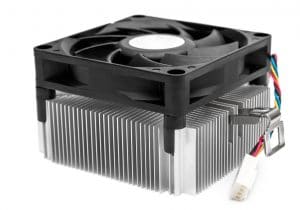 Efficiency is almost always a company’s main focus. No matter the industry, high levels of efficiency are key to remaining competitive, and to helping companies control their overall costs of operations. When it comes to electrical cooling, however, creating and maintaining highly efficient processes hasn’t always been easy. That’s largely because of the solutions that companies had to rely on, such as air conditioning and air compression, to generate chilled air and prevent electrical overheating. Fortunately, these days, electrical cooling focuses on efficiency more often and more effectively than ever before. With modern heat exchangers, companies can successfully keep their electrical enclosures cool and their technologies running smoothly, all while maintaining optimal efficiency. (more…)
Efficiency is almost always a company’s main focus. No matter the industry, high levels of efficiency are key to remaining competitive, and to helping companies control their overall costs of operations. When it comes to electrical cooling, however, creating and maintaining highly efficient processes hasn’t always been easy. That’s largely because of the solutions that companies had to rely on, such as air conditioning and air compression, to generate chilled air and prevent electrical overheating. Fortunately, these days, electrical cooling focuses on efficiency more often and more effectively than ever before. With modern heat exchangers, companies can successfully keep their electrical enclosures cool and their technologies running smoothly, all while maintaining optimal efficiency. (more…)
Key Differences When Cooling with Heat Exchangers
 There are many obvious differences in how modern heat exchangers operate compared to more traditional electrical cooling solutions. For example, companies that implement heat exchangers for their electrical thermal management needs can often realize the benefits of doing so almost immediately. Nearly all of the differences, both obvious and discreet, equate to much more efficient and streamlined electrical cooling processes, helping companies benefit in everything from improved efficiency to lower overall costs of operations, and much more. Among the many different ways in which heat exchangers are an improvement over traditional cooling methods, three of the most important include the specific heat transfer methods they utilize, the costs of utilizing them continuously, and the consequences for a company and its environment. (more…)
There are many obvious differences in how modern heat exchangers operate compared to more traditional electrical cooling solutions. For example, companies that implement heat exchangers for their electrical thermal management needs can often realize the benefits of doing so almost immediately. Nearly all of the differences, both obvious and discreet, equate to much more efficient and streamlined electrical cooling processes, helping companies benefit in everything from improved efficiency to lower overall costs of operations, and much more. Among the many different ways in which heat exchangers are an improvement over traditional cooling methods, three of the most important include the specific heat transfer methods they utilize, the costs of utilizing them continuously, and the consequences for a company and its environment. (more…)
Better Thermal Management from a Customer’s Perspective
 When companies these days discuss streamlining their thermal management processes, the discussion typically revolves around how companies will benefit. For example, the goal of implementing more efficient thermal management solutions is often to help companies save money on their overall operations. However, for many companies that provide products and services to customers, the benefits of streamlining operations often extend to those customers, as well. In many cases, more efficient and cost-effective manufacturing and production processes lead to lower costs and higher-quality products for customers. This means companies can gain a much greater competitive edge while still keeping overall operating costs low. (more…)
When companies these days discuss streamlining their thermal management processes, the discussion typically revolves around how companies will benefit. For example, the goal of implementing more efficient thermal management solutions is often to help companies save money on their overall operations. However, for many companies that provide products and services to customers, the benefits of streamlining operations often extend to those customers, as well. In many cases, more efficient and cost-effective manufacturing and production processes lead to lower costs and higher-quality products for customers. This means companies can gain a much greater competitive edge while still keeping overall operating costs low. (more…)
How Eco-Friendly Companies Prevent Electrical Overheating
 For modern companies to be more eco-friendly in all that they do, it has to start with their internal processes. That’s why increasingly more companies in nearly every industry are focusing much of their investments on technologies that help them promote greener products and business operations. While electrical thermal management isn’t typically at the top of the conversation when it comes to streamlining operations, modern electrical cooling methods have played a significant role in many different companies’ ability to be more eco-friendly. (more…)
For modern companies to be more eco-friendly in all that they do, it has to start with their internal processes. That’s why increasingly more companies in nearly every industry are focusing much of their investments on technologies that help them promote greener products and business operations. While electrical thermal management isn’t typically at the top of the conversation when it comes to streamlining operations, modern electrical cooling methods have played a significant role in many different companies’ ability to be more eco-friendly. (more…)
